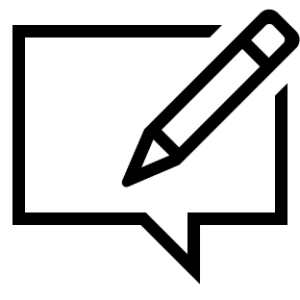In the recent past, there has been a lot of chatter on X and LinkedIn about outbound sales being “dead”. Nobody really opens those cold emails, the chances of anyone caring about your SaaS solution are slim unless it’s a total killer, etc., etc.
Don’t let the noise discourage you. Outbound sales strategies when carried out under the backing of an experienced outbound sales development representative are known to yield good results. For B2B SaaS, 70% of its leads should be coming in from outbound initiatives.
Cracking the code of B2B SaaS sales strategies can be tough though. With longer sales cycles, higher acquisition costs, and a greater emphasis on service, B2B sales strategies need to be effective to achieve the desired results. That said, there are some key elements to include in an outbound B2B SaaS sales strategy that could lead to sales success. What are they? How should you implement them? And are they at all effective? Take a deep dive.
5 Key Things To Do In An Outbound B2B SaaS Sales Strategy
1. Build Relationships, Not A List
The first thing any outbound sales development representative is taught to do in sales is to start building a list of prospects, move on to qualifying them, and then hand interested ones over to an Account Executive to close the deal. SDRs are usually entry-level jobs that involve sending a bunch of cold emails to potential clients acquired from LinkedIn, company websites, or industry reports. Unfortunately, in B2B sales, even entry-level SDR positions must have requisite training on how the SaaS solution can benefit the potential client, and that’s where many companies fail in their sales strategy. SDRs tend to be untrained and are sometimes not able to draft a compelling cold email.
Moreover, to build a relationship the SDR needs to double up as a consultant. It’s not just about selling the SaaS solution, it’s about adding value to the client’s workflow, and an SDR can’t do that unless they’re highly trained to understand the client’s requirements at a fundamental level.
More importantly, it’s also of prime importance for the SDR to build rapport with prospects. Listening to them, their feedback, their experiences using the SaaS solution, and asking them about their misgivings, are all key ways in which an outbound sales development rep can win the trust and confidence of prospects. It’s also crucial to develop authority in the industry and keep lines of communication open for feedback and questions.
Another way to build relationships and not a list is to personalize your messaging at all times. Study your prospects minutely. Spend time going through their LinkedIn profiles, check out what they are engaging with, and tailor your cold emails or calls accordingly. You need to know the company and its key decision-makers well, in order to cut through the noise.
B2B sales cycles are slower but unless prospects are nurtured and warmed consistently, it’s next to impossible to win their trust and get them onboard. SaaS companies need to shift their focus to relationship building and watch the list create itself.
2. Create An Ideal Customer Profile (ICP), Not A Sieve
Most outbound sales development reps will create an ICP to serve as a sieve. While the ICP does strain out those leads that are absolutely useless, will it find you the leads you need? To create a useful ICP, go back to study the SaaS solution. Break it down feature by feature to understand exactly how it adds value to clients and which industries are likely to benefit from it.
While a great product can simplify outbound sales development, most of the time it’s up to you to spin the SaaS solution’s features into a must-have tool in the prospect’s workflow. However, very rarely do key decision-makers care about features. They’re more interested in whether your solution can fix common boo-boos in existing software or whether it adds unparalleled value to warrant a shift.
An ICP can’t serve as a way to eliminate unqualified prospects. It must serve as a way to identify them. If your ICP isn’t working for you, one of the most under-utilized ways to find clients is to outsource prospecting to dedicated SDR service providers who have the experience and expertise of an Account Executive but come at the cost of an SDR.
3. Get Useful Sales Tech, Automate Repetitive Work
For any outbound sales development team, however small, to function at its best it requires tools. Having a CRM in place to automate and keep track of some aspects of the sales process can free up valuable time for the SDR to spend time researching the prospects.
Research tools that aid the sales process in contact management, automate follow-ups, and provide analytics and reporting then get something that works for your team. These tools can help to eliminate the amount of boring repetitive work an SDR needs to get done so that they can focus all their efforts and talent into prospecting.
4.Try Account-Based Management for Sales
Account-Based Management (ABM) is a focused sales strategy that targets high-value accounts with personalized solutions. Instead of broad outreach, it prioritizes key accounts, addressing their specific needs and challenges. This approach helps sales teams build stronger relationships, allocate resources effectively, and improve the chances of closing deals. By focusing on high-priority clients, ABM increases customer satisfaction and delivers a better return on investment.
ABM also brings sales and marketing teams together to create coordinated, tailored campaigns. Using data-driven insights, teams can better understand account needs and anticipate challenges, fostering trust and long-term loyalty. This targeted strategy makes sales efforts more efficient and ensures a competitive edge in today’s market.
5. Scale The Sales Process That Works
Scaling a working sales model helps businesses grow by expanding what already works. It allows companies to use proven strategies in new markets or with different customer groups, saving time and reducing risks. By focusing on what’s successful, businesses can increase revenue, reach more customers, and grow sustainably without starting from scratch.
Scaling also helps businesses stay competitive by making processes easier to repeat and maintain. It ensures consistent customer experiences and helps train new team members effectively. Using tools like automation and data analysis, companies can improve efficiency and find new opportunities. Without scaling, growth can slow down, and businesses may struggle to adapt. Scaling is essential for long-term success and staying ahead in the market.
Wrapping Up
Outbound sales development is a powerful way to build meaningful relationships and drive sustainable growth for your SaaS business.
An effective outbound B2B SaaS sales strategy requires a combination of targeted prospecting, personalized outreach, and consistent follow-up to engage potential customers.
However, leveraging expert SDR services ensures that your team focuses on high-quality leads, saving time and boosting conversion rates.
By utilizing specialized sales development services from Katama, you can get campaigns that resonate with key decision-makers.
With the right approach and resources, our customized outbound B2B SaaS strategies can help deliver impressive results.
Connect with us!
Frequently Asked Questions
- What are outbound B2B SaaS sales?
Outbound B2B SaaS sales involve reaching out to potential customers directly through methods like cold emails, calls, or LinkedIn outreach to sell your software services.
- Why is outbound sales important for SaaS businesses?
Outbound sales allow SaaS businesses to target specific companies, engage decision-makers, and create direct opportunities for growth.
- What should I prioritize in an outbound strategy?
Focus on identifying ideal customer profiles, personalizing outreach, and following up consistently with leads.
- What is the role of SDRs in outbound sales?
SDRs (Sales Development Representatives) handle lead generation and initial outreach, qualifying prospects for the sales team.
- How do I identify the right leads for outbound sales?
Use criteria like industry, company size, pain points, and decision-making authority to find your ideal customer profile.
- How can I make my outreach more effective?
Personalize messages, address specific pain points and offer clear value in your communication.
- What tools can help with outbound B2B sales?
Tools like CRM systems, email automation platforms, and LinkedIn Sales Navigator can streamline outreach and tracking.
- How do I handle rejection in outbound sales?
Stay professional, learn from feedback, and use rejection as an opportunity to refine your approach.
- When should I consider expert SDR services?
If your team struggles with consistent lead generation or you need scalable outbound sales efforts, expert SDR services can help.
- What’s the benefit of outbound sales development services?
These services improve targeting, outreach, and lead nurturing, helping your business grow faster with qualified opportunities.

